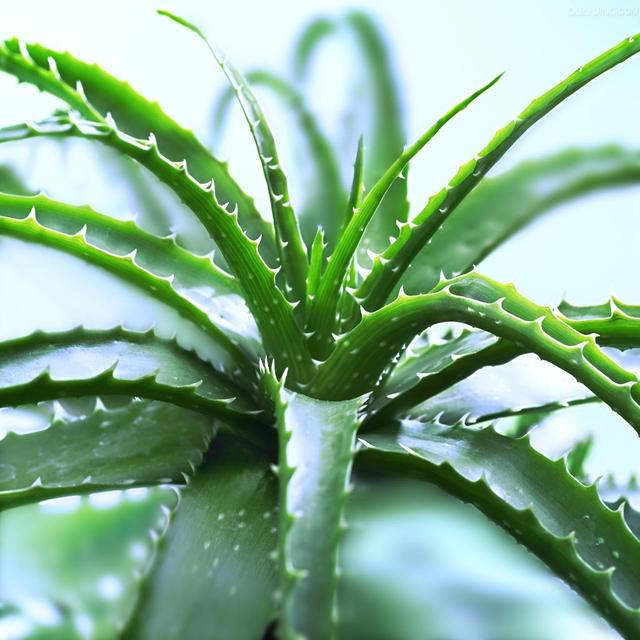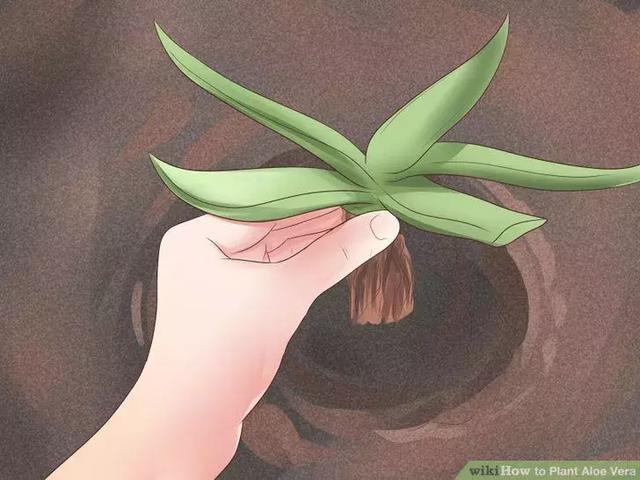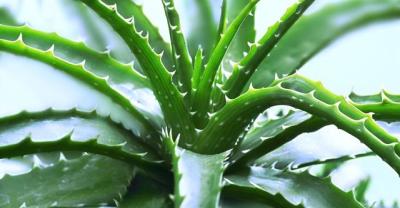Planting and transplanting methods of aloe vera
Plant or transplant (transplant) aloe

Questions and answers on planting or transplanting new plants for daily care of aloe vera
Aloe vera is easier to grow in a suitable environment, as long as you have water and sunlight to imitate the hot climate in which this plant grows. An unusually succulent plant, aloe plants cannot reproduce from cutting leaves, but are usually propagated and separated from the base or roots of adult plants by young cloned plants. These fragile plants must be treated with care.

Give plants plenty of sunshine and temperature. Aloe plants like 8 mi 10 hours of sunlight. They like to grow in warm or hot temperatures, and they go dormant in cool seasons. However, they may be injured at temperatures below 25 °F.
The cold-resistant zone 9, 10, and November are the most suitable seasons for aloe to grow outdoors.
Although a plant can adapt to high temperatures and thrive in hot conditions, it can still be sunburned by the sun. If the leaf starts to turn brown, move it to a dark area.

The soil of aloe needs good drainage. Aloe plants are adapted to survive in dry conditions, and the roots will rot if the flowerpot stores water. Or self-made mixed soil, using the same amount of soil, sand, gravel. If you plant aloe in a container, make sure the water in the base of the container passes through the drain hole.

When planting, just cover the roots, but don't let the aloe branches come into contact with the soil. If you put too many pictures and bury the green leaves in the soil, they will rot.

Cover the soil surface with gravel or pebbles (optional). Place a layer of small stones around the aloe planting base to maintain soil moisture and reduce evaporation.
If aloe is not in a hot climate, white stone can reflect the light of the sun to the root of aloe, which can be a good idea.

Don't drink water for the first few days after planting. Before you start watering, give aloe plants a few days to repair roots that may be damaged during planting. Too much water will damage the roots. Aloe vera can store a lot of water.
Provide daily care and troubleshooting
During the growing season, whenever the soil is dry, it can be watered. During the summer, or at any time when the weather is warm and sunny, aloe plants will grow the fastest and are often watered. However, aloe vera is much easier to moisture up plants than to dry, so there is no water until the soil has dried to a depth of 3 inches (7.5 cm).
In the cold season, there is little water. Aloe plants often hibernate in winter, or the weather is cold for a long time. Unless you are in a heated room, watering once or twice a month all year round.
Once a year or no fertilizer. Aloe plants do not need fertilizer, and overuse can harm the plant or make it grow in an unhealthy way. If you want to encourage growth, use low-nitrogen, high-phosphorus, low-potassium fertilizers, such as 10:40:10 or 15:30:15. Once a year at the beginning of the growing season, at the beginning of the growing season.
Get rid of weeds. Weeds should grow in the soil around aloe. If the plant is outdoors, delete these regularly, but be careful. Due to the good loose and sandy soil of aloe, it is easy to damage the root.
If the leaves grow slowly, increase the sunlight. Aloe vera should grow upward or outward at an angle toward the sun. If they are low to the ground or growing outward, they probably don't get enough sunlight. [15] move it to a sunny area. If it is indoors, consider putting it outdoors during the day.
If the leaves turn brown, reduce the sunlight. At the same time, aloe is more hardy, when most plants are exposed to sunlight, it may still burn leaves. If the aloe plant turns brown, move it to an area and place it in the shade in the early afternoon.
If the leaves are thin and curly, add water. Thick, fleshy leaves store water used by plants during periods of drought. If the leaves are thin or curly, aloe vera plants are more frequent. Be careful not to overcorrect it: water runs away quickly through the soil to prevent root rot.
If the leaves turn yellow or fall off, stop watering. Yellowed or "melted" leaves are suffering from excessive water. Stop watering the following week (or two weeks during the dormant period), and once restored, the water will be less frequent. You can cut off any discolored leaves, preferably with a sterilized knife to reduce too much damage to the plant.
Let your big aloe plant grow to fill its container. Although any healthy aloe plant has the opportunity to produce younger plants, or "cubs", this is most likely to occur when adult plants have reached the boundaries of their containers.
Wait until young plants appear. Your aloe plant begins to produce "little aloe", which is the clone itself shares some of the mother's root system. These sometimes grow drainage holes in the container, even winding from the root to the adjacent container!
Cubs tend to be greener than adult leaves.
Let young plants grow to enough size. Young plants will do best if you wait until they are small and mature and have some roots of their own. Unlike subspecies and plant size, a good rule of thumb is that young plants should be at least 3 inches (7.5 cm) tall, preferably 5 inches (12.5 cm). [20] if the container has enough space, it looks like it will grow up when the small one is 1 / 5 the size of an adult and has a "real leaf".
Remove young plants with a sharp, clean knife. Clean your knife first to reduce the chance of infection. Cut it off and make sure to keep the young plant connected to its roots if anything exists. The existence of one's own roots will increase the chances of success.
Leave the cut plants in the air for a few days
Instead of immediately planting new aloe vera, the injured area will be restored and replanted. If the cutting surface of the plant is placed directly in the soil, it will increase the risk of infection.
. Put young plants on well-drained soil instead of burying leaves. Because the root system may be small (or even non-existent), you may need to support the plant with a layer of pebbles and lean it against another object. Within a few weeks, the root system should be big enough to support the plant. [22]
More detailed information can be found in the planting section, applicable to young plants, as well as mature ones.
Aloe plants can last without water for a long time. If you water too much in front of its roots, the water can rot the plant. Wait for at least a few weeks for the little aloe vera to grow its roots before watering. If Little Aloe already has its own root system, you may get root settings to water it and leave it in the shade for 2 to 3 weeks.
Once the plant is in its container and has grown its roots, it can be regarded as an adult plant. Just follow the daily care provided.
- Prev

Management methods of incense trees after planting
(1) in the initial management of the planting of incense trees, attention should be paid to preventing drought and watering in time according to the weather conditions. The saplings are young from February to March, June to August every year.
- Next

How long is the service life of dental implants?
The birth of dental implants is an important breakthrough in the field of dentistry, and it has become the first choice for the treatment of missing teeth. Compared with traditional removable dentures and fixed dentures.
Related
- Fuxing push coffee new agricultural production and marketing class: lack of small-scale processing plants
- Jujube rice field leisure farm deep ploughing Yilan for five years to create a space for organic food and play
- Nongyu Farm-A trial of organic papaya for brave women with advanced technology
- Four points for attention in the prevention and control of diseases and insect pests of edible fungi
- How to add nutrient solution to Edible Fungi
- Is there any good way to control edible fungus mites?
- Open Inoculation Technology of Edible Fungi
- Is there any clever way to use fertilizer for edible fungus in winter?
- What agents are used to kill the pathogens of edible fungi in the mushroom shed?
- Rapid drying of Edible Fungi

